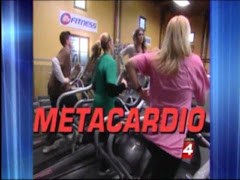Dr. Gabe Mirkin's Fitness and Health E-Zine
July 5, 2009
Vigorous Exercise Protects Your Heart
This week, Norwegian researchers reported their findings
that high intensity interval training maximally improves every
conceivable measure of heart function and heart strength. It also
helps to prevent both the pre-diabetic metabolic syndrome and
the heart damage it causes (Exercise and Sports Sciences Reviews,
July 2009).
This is more evidence that older people who compete in
vigorous sports, such as biking and running, live longer and
suffer less disease than people who exercise at a more casual
pace. The most intense exercise includes interval training:
running or cycling very fast to become severely short of breath,
then resting and repeating these almost maximum efforts several
times in the same workout. Controlled interval training is now a
treatment for heart failure. High-intensity interval training
raises the good HDL cholesterol far more than less intense exercise
(Journal of Strength and Conditioning Research, March 2009).
Intense exercise for older people is still a controversial
subject, but these new results concur with many earlier studies.
Intense exercise is far more effective than casual exercise in
preventing and treating diabetes (Circulation, July 2008) and
reducing belly fat (Medicine & Science in Sports & Exercise
[MSSE], November 2008). Vigorous exercise protects obese
people from heart attacks and prolongs their lives, even if they
don't lose weight (MSSE, October 2006). Intense exercise is
more effective in preventing heart attacks than less intense
exercise done more frequently (MSSE, July 1997). Death rate
from cardiovascular disease is lowered by high intensity activities
such as jogging, swimming, hiking, tennis and climbing stairs, but
not by lower intensity activities such as walking, bowling, sailing,
golf and dancing (Heart, May 2003). Paul Thompson, of the
University of California at Berkeley, showed that the faster aged
runners run, the lower their blood pressure, cholesterol, and blood
sugar levels (Medicine and Science in Sports and Exercise,
October 2008).













